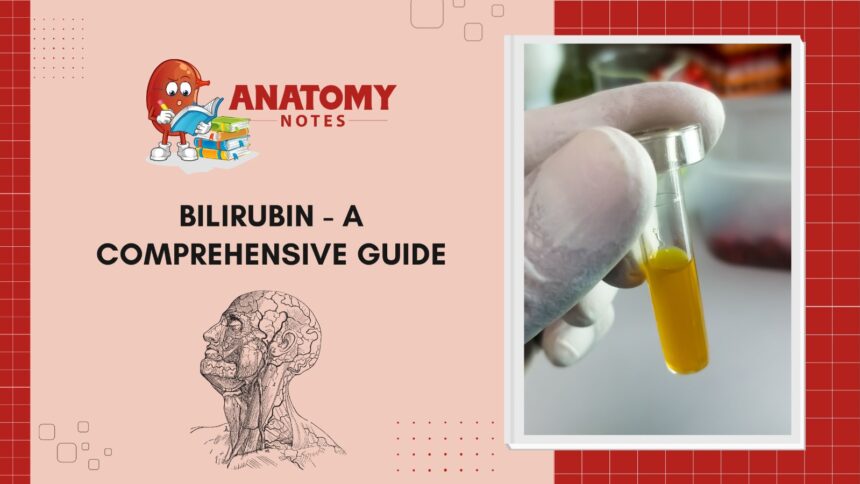Introduction to Bilirubin
Welcome to the fascinating world of bilirubin – a vital component in our bodies that often goes unnoticed until it causes concern. Have you ever wondered what exactly bilirubin is and why it’s so important for our health? In this comprehensive guide, we will delve into everything you need to know about bilirubin, from its functions in the body to how it can indicate potential health issues. So, sit back, relax, and let’s explore the intriguing world of bilirubin together!
What is Bilirubin?
Have you ever wondered what exactly bilirubin is and why it’s important for your body? Bilirubin is a yellowish pigment that forms when red blood cells break down. It plays a crucial role in the liver’s function, helping to process waste products and toxins from the body.
When red blood cells reach the end of their lifespan, they are broken down into bilirubin, which is then released into the bloodstream. The liver filters out this bilirubin and processes it so that it can be excreted from the body through bile.
In normal circumstances, bilirubin levels in the blood are kept at a healthy range. However, if there is an issue with the liver or excessive breakdown of red blood cells, bilirubin levels can rise, leading to jaundice.
So next time you hear about bilirubin, remember that it’s not just a random word – it’s a vital component of your body’s waste disposal system!
Function of Bilirubin in the Body
Have you ever wondered about the role of bilirubin in your body? Well, let’s dive into it. Bilirubin plays a crucial function in the breakdown of red blood cells, helping to recycle their components and eliminate waste. It acts as a pigment that gives bile its yellow color, aiding in digestion by breaking down fats.
Furthermore, bilirubin has antioxidant properties that help protect cells from damage caused by free radicals. In addition to its role in digestion and waste elimination, bilirubin also serves as an indicator of liver function when levels are measured through blood tests.
This seemingly simple pigment plays multiple important roles in maintaining our health and well-being.
Sources of Bilirubin
Bilirubin, a yellow pigment found in the body, has various sources. One of the main sources of bilirubin is the breakdown of red blood cells. When old or damaged red blood cells are broken down, they release hemoglobin, which is then converted into bilirubin by the liver. Another source of bilirubin comes from the metabolism of heme proteins in other tissues.
Additionally, bilirubin can also be derived from dietary sources such as animal fats and proteins. When these foods are digested, they release certain compounds that can contribute to the production of bilirubin in the body.
Moreover, certain medical conditions like Gilbert’s syndrome can also lead to an increase in bilirubin levels due to impaired processing by the liver. It’s important to understand these different sources to better comprehend how bilirubin functions within our bodies and its significance for overall health.
Production of Bilirubin
Have you ever wondered how bilirubin is produced in the body? Let’s dive into the fascinating process. Bilirubin is formed when old red blood cells break down in the spleen and liver. This breakdown releases heme, a component of hemoglobin, which is then converted into unconjugated bilirubin.
The unconjugated bilirubin travels to the liver where it undergoes a process called conjugation. Here, it combines with glucuronic acid to become water-soluble and ready for excretion from the body.
Once conjugated, bilirubin is released into bile and eventually makes its way to the intestines where it plays a role in digestion before being eliminated through feces.
It’s truly remarkable how our bodies efficiently manage this crucial pigment!
Transportation of Bilirubin
Once bilirubin is produced in the body, it needs to be transported to the liver for further processing. This transportation process is crucial for maintaining healthy levels of bilirubin in the bloodstream.
Bilirubin travels through the blood bound to albumin, a protein that helps carry it safely to the liver. Once it reaches the liver, bilirubin undergoes additional chemical changes before being excreted from the body.
The transportation of bilirubin is a highly regulated process, with specific proteins and enzymes playing key roles in ensuring its safe delivery to the liver. Any disruptions in this transportation system can lead to an accumulation of bilirubin in the blood, resulting in jaundice.
Understanding how bilirubin is transported within the body can provide valuable insights into potential treatment options for conditions related to elevated bilirubin levels.
Bilirubin Metabolism
Bilirubin metabolism is a complex process that involves the breakdown and excretion of bilirubin from the body. Once produced in the liver, unconjugated bilirubin is transported to the small intestine where it undergoes further processing by gut bacteria. This leads to the formation of urobilinogen, which can either be reabsorbed into circulation or excreted in feces.
The conjugated form of bilirubin is water-soluble and easily excreted through bile into the intestine. From there, it can be eliminated in stool or converted back into its unconjugated form for reabsorption by the liver. Any disruption in this metabolic pathway can lead to elevated levels of bilirubin in the blood, resulting in jaundice.
Understanding how bilirubin is metabolized is crucial for diagnosing and treating conditions related to its accumulation. By monitoring these processes, healthcare providers can better assess liver function and overall health status.
Clinical Significance of Bilirubin
Have you ever wondered about the clinical significance of bilirubin in your body? Bilirubin plays a crucial role in indicating various health conditions when levels are elevated. High bilirubin levels can be a sign of liver dysfunction, hemolytic anemia, or bile duct obstruction. It serves as a biomarker for assessing liver function and diagnosing certain medical disorders.
Monitoring bilirubin levels is essential in managing conditions like jaundice and determining the effectiveness of treatment protocols. Additionally, healthcare providers use bilirubin measurements to track progress during recovery from liver-related illnesses. Understanding the clinical significance of bilirubin aids in early detection and intervention for potential health issues.
Keeping an eye on bilirubin levels through routine blood tests can provide valuable insights into your overall health status.
Types of Jaundice
Jaundice is not a one-size-fits-all condition. There are different types of jaundice, each with its own underlying causes and manifestations.
One type of jaundice is hemolytic jaundice, which occurs when there is an increased breakdown of red blood cells, leading to elevated levels of bilirubin in the bloodstream.
Another type is hepatocellular jaundice, which results from liver damage or dysfunction, preventing the organ from effectively processing bilirubin.
Obstructive jaundice occurs when there is a blockage in the bile ducts, hindering the flow of bilirubin from the liver to the intestines for excretion.
Neonatal jaundice affects newborn babies and usually resolves on its own as their livers mature and can efficiently process bilirubin.
Understanding the different types of jaundice is crucial for accurate diagnosis and appropriate treatment.
Diagnostic Tests for Bilirubin
When it comes to diagnosing bilirubin-related conditions, healthcare providers may recommend specific tests to assess the levels of this important pigment in the body. One common test is a blood test that measures total bilirubin levels in the bloodstream. This can help determine if there are any abnormalities present.
Another diagnostic tool is the direct and indirect bilirubin tests, which provide more detailed information about how bilirubin is being processed by the liver. These tests can be helpful in identifying different types of jaundice and other liver disorders.
In some cases, imaging studies such as ultrasounds or MRIs may be used to visualize the liver and bile ducts for any blockages or abnormalities that could be causing elevated bilirubin levels.
These diagnostic tests play a crucial role in helping healthcare professionals accurately diagnose and treat conditions related to abnormal bilirubin levels.
Treatment for Bilirubin-related Conditions
When it comes to treating bilirubin-related conditions, the approach varies depending on the underlying cause. For cases of jaundice caused by excessive breakdown of red blood cells, addressing the root issue is crucial. This may involve treating any underlying infections or disorders that are contributing to the problem.
In cases where obstruction in bile flow is causing elevated bilirubin levels, interventions like surgical procedures or medications may be necessary to alleviate the blockage and restore proper functioning of the liver and gallbladder. Additionally, lifestyle changes such as adopting a healthy diet and avoiding alcohol can also play a significant role in managing bilirubin-related conditions.
Regular monitoring of bilirubin levels through blood tests is essential to track progress and adjust treatment plans accordingly. Collaborating closely with healthcare providers to develop a personalized treatment strategy tailored to individual needs is key in effectively managing bilirubin-related conditions for optimal health outcomes.
Future Research and Bilirubin
As research in the field of medicine continues to advance, there is growing interest in exploring the potential future implications of bilirubin. Scientists are delving into how this molecule may play a role in various health conditions beyond its current known functions.
One area of focus is understanding the relationship between bilirubin levels and cardiovascular health. Preliminary studies suggest that higher bilirubin levels may be associated with a reduced risk of heart disease, prompting further investigations.
Additionally, researchers are investigating the potential therapeutic applications of bilirubin for conditions such as inflammation and oxidative stress. The antioxidant properties of this pigment have sparked curiosity about its possible use in developing novel treatment strategies.
Furthermore, advancements in technology are enabling more precise measurements and analysis of bilirubin levels, opening up new avenues for research. These developments may lead to a deeper understanding of how bilirubin impacts overall health and wellness.
The future holds promising possibilities for further uncovering the intricacies of bilirubin and its potential implications for human health.
Conclusion
As we wrap up this discussion on bilirubin, it’s important to reflect on the intricate role this pigment plays in our bodies. From its formation in the breakdown of red blood cells to its transportation and metabolism, bilirubin is a key player in maintaining our overall health.
Understanding the clinical significance of bilirubin, including its connection to jaundice and other conditions, sheds light on how crucial it is for proper liver function. Diagnostic tests help healthcare professionals assess bilirubin levels accurately and determine appropriate treatment options.
Looking ahead, future research holds promise for further insights into the complexities of bilirubin and potential advancements in managing related conditions. By staying informed and proactive about our health, we can continue to appreciate the fascinating intricacies of substances like bilirubin that keep our bodies functioning optimally.
Remember, knowledge is power when it comes to understanding your own body’s processes. Stay curious and never stop learning about the amazing world within you!
Frequently Asked Questions (FAQs)
Q1. What causes high bilirubin levels in the blood?
High bilirubin levels can be caused by various factors, including liver disease, hemolytic anemia, bile duct obstruction, or certain medications.
Q2. How is jaundice diagnosed?
Jaundice can be diagnosed through a physical examination, blood tests to measure bilirubin levels, imaging studies like ultrasound or MRI, and sometimes a liver biopsy.
Q3. Can high bilirubin levels be dangerous?
Elevated bilirubin levels can lead to complications if left untreated, such as brain damage in newborns (kernicterus) or liver damage in adults.
Q4. What are the treatment options for high bilirubin levels?
Treatment depends on the underlying cause but may include medication to increase bile flow, phototherapy to break down excess bilirubin in the skin, or surgery for severe cases like bile duct obstruction.
Q5. Is there ongoing research on bilirubin and its effects?
Yes, researchers continue to explore the role of bilirubin in health and disease. Studies are investigating its antioxidant properties, potential benefits against inflammation and neurodegenerative diseases like Alzheimer’s.
Incorporating these FAQs into your understanding of Bilirubins will help you navigate this essential compound’s functions within our bodies effectively!




